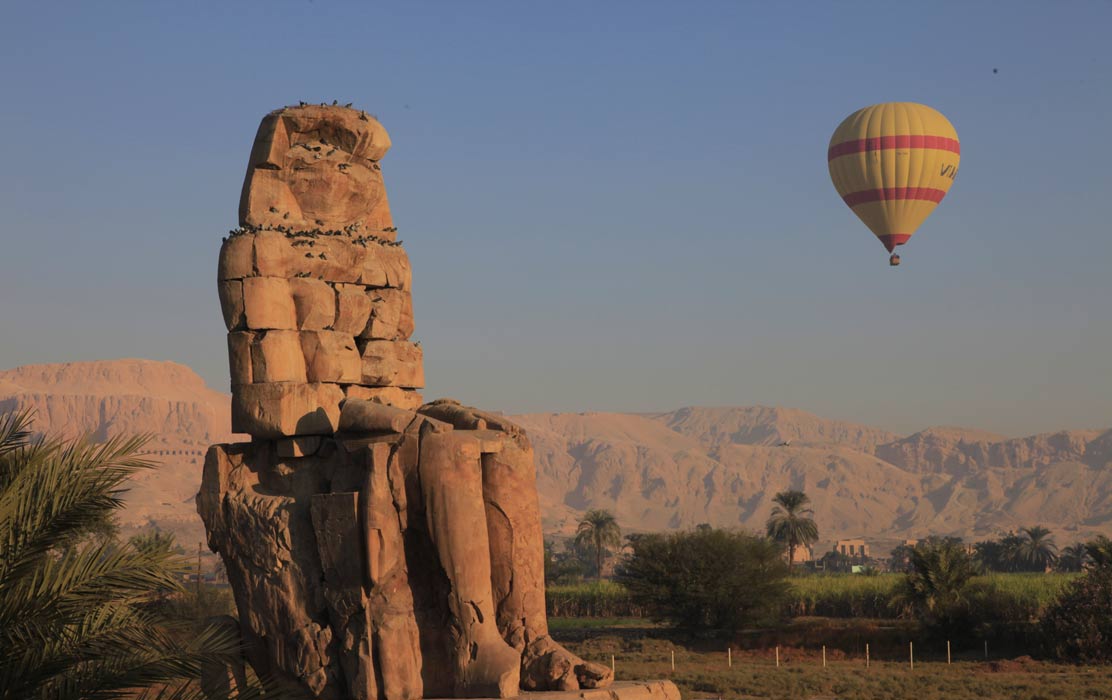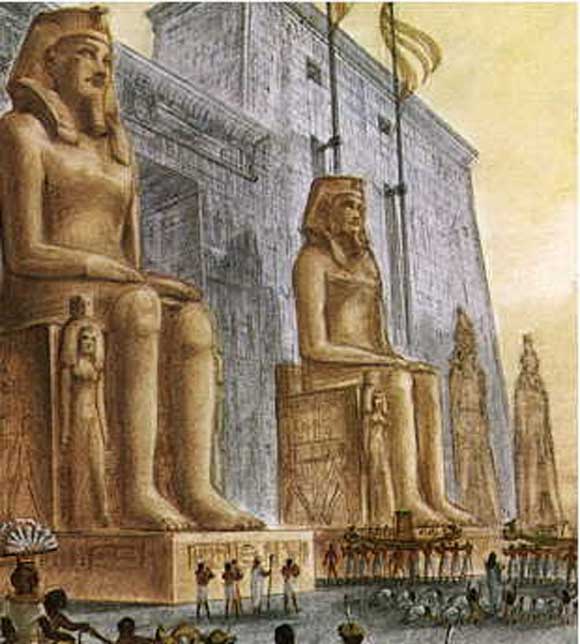The Colossi of Memnon: Why Did the Giant Statue Sing at Dawn?
The Colossi of Memnon are a pair of giant statues made of stone that are located in the Theban Necropolis in Luxor, Upper Egypt. The statues were made during the 14th century BC, during the period in ancient Egyptian history known as the New Kingdom. The best-known legend about the Colossi of Memnon is that of the ‘Vocal Memnon,’ in which one of the statues was reputed to ‘sing’ every morning at dawn.

The Ancient Egyptian Pharaoh Who Created the Colossi of Memnon
The Colossi of Memnon were built during the reign of Amenhotep III, a pharaoh of the 18th Dynasty who ruled Egypt during the 14th century BC. The statues, which are each about 20 meters (65.62 ft.) in height, are made of quartzite sandstone. The stone is thought to have been quarried either from El-Gabal el-Ahmar (near Cairo) or from Gebel el-Silsileh (near Aswan), and then transported by land to Luxor. The statues depict Amenhotep III in a seated position, with their hands resting on their knees, and their faces facing the Nile in the east.
- Questioning the Mycenaean Death Mask of Agamemnon
- Mycenae, the Ancient city founded by Perseus
- Archaeologists find Magnificent Statues of Pharaoh Amenhotep III and His Protector, the Lioness Goddess of War

Amenhotep III’s Sitting Colossi of Memnon, Theban Necropolis, Luxor, Egypt. (merydolla /Adobe Stock)
The Name and Purpose of the Egyptian Colossi of Memnon
The original function of the colossi was to serve as guardians at the entrance of the pharaoh’s mortuary temple. When it was completed, this temple complex was one of the largest and most luxurious in the land. Today, however, little is left of the mortuary temple, and its foundations were gradually damaged by the annual flooding of the Nile, which led to the temple being demolished, and its stone blocks re-used for other structures. The colossi were spared this fate, though they also suffered extensive damage over the millennia.

The Colossi of Memnon in front of the Egyptian pharaoh Amenhotep III’s mortuary temple. (Ancient Egypt)
The colossi were named ‘Memnon’ towards the end of the 1st century BC. Memnon was a hero who lived during the time of the Trojan War. As the King of Ethiopia, Memnon led his soldiers to Troy, where they fought against the Greeks on the side of the Trojans. He was eventually slain by Achilles.
According to legend, Memnon was the son of Eos, the goddess of dawn. On learning of her son’s death, Eos wept, which is said to form the morning dew.

‘Statues of Memnon at Thebes during the flood,’ David Roberts. (1848) (Public Domain) The statues in Luxor, Egypt have been impacted by the annual flooding of the Nile.
The Ancient Egyptian Statue Sings at Dawn
Eos’ weeping was associated with the sound said to have been produced by one of the colossi at dawn. According to the Greek geographer Strabo, in 27 BC, a strong earthquake caused the top half of the northern colossus to collapse, and its lower portion to crack. As a consequence of this, the statue began to ‘sing,’ i.e. emitted a light moaning or whistling sound each morning as the Sun rose.
In order to explain this phenomenon, the ancient Greek and Roman travelers to the site began to associate the colossi with the legendary Memnon. The ‘singing’ of the colossus, therefore, was said to have been made by Eos mourning for her dead son. Alternatively, it was believed that the sounds were the cries of Memnon greeting his mother.
Ahmed Osman notes that “Whether associating the Colossi with his name was just whimsy or wishful thinking on the part of the Greeks – they generally referred to the entire Theban Necropolis as the “Memnonium” – the name has remained in common use for the past 2000 years.”

Antonio Beato, Colossi of Memnon, Egypt, 19th century. Brooklyn Museum. (Public Domain)
A natural explanation for the signing or wailing phenomenon has been put forward. It has been suggested that due to the increase in temperature at dawn, the dew inside the porous rock evaporates, thus causing the statue to ‘sing.’
Silencing ‘Memnon’
Some believed that it was good luck to hear the statue ‘sing,’ while others were of the opinion that the statue was an oracle. With this in mind, the Colossi of Memnon was a popular tourist attraction and many ancient travelers visited it, including several Roman emperors. One of these was Septimius Severus, who reigned between the end of the 2nd century AD and the beginning of the 3rd century AD.

Drawing of the ancient Egyptian Colossi of Memnon. (Wellcome images/CC BY 4.0)
According to local tradition, the emperor visited the Colossi of Memnon in 199 AD. During his visit, Septimius Severus decided to repair the broken statue by having the two halves re-connected. This caused the statue to stop ‘singing’ forever. Nevertheless, the Colossi of Memnon still remain a tourist attraction even today.
Top Image: One of the seated statues known as the Colossi of Memnon. Source: danheller /Adobe Stock
By Wu Mingren
Related Post
A shocking documentary proves that mermaids do exist
SHOCKING Revelation: Thuya, Mother of Queen Tiye, Was the Grandmother of Akhenaten and Tutankhamun—What Ancient Egyptian Secrets Did She Leave Behind?
Breaking News: Astonishing Discoveries at Karahan Tepe Confirm an Extraterrestrial Civilization is Hiding on Earth, and NO ONE Knows!
Breaking News: Researchers FINALLY Discover U.S. Navy Flight 19 After 75 Years Lost in the Bermuda Triangle!
NASA’s Secret Investigation: Uncovering the Astonishing Mystery of the UFO Crash on the Mountain!
Explosive UFO Docs LEAKED: Startling Proof That Aliens Ruled Ancient Egypt!